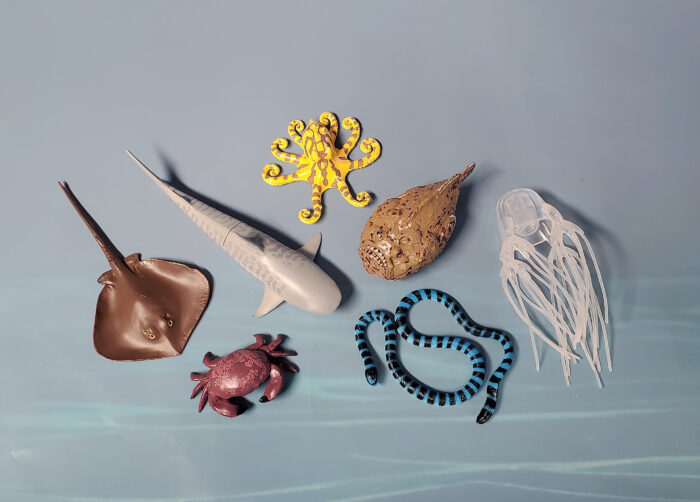For my next October review I will be giving a brief overview of the entire 3D Dangerous Sea Creatures Pictorial Book collection by The Access (also known as Access Toys), which was released just a couple months ago this past August 2023. I was originally going to just review the jellyfish, but was convinced to review the whole set by forum member JimoAi.
Author: bmathison1972
 I am Blaine, known by bmathison1972 on the forums and blogs. I am a professional parasitologist specializing in agents of human disease, including medically-important arthropods. I am also an amateur entomologist and study Nearctic click beetles (family Elateridae). Historically, much of my collection was devoted to insects and other arthropods, but in late 2018 I started building a Synoptic Collection of other species, to have one good exemplar of any animal species (my personal ‘Natural History Museum’). Other hobbies include hiking, bird-watching, running, and lifting weights, but my other ‘big’ hobby is visiting sports arenas, especially baseball stadiums. Whenever I travel for work (which I do with some frequency), I always check to see if there is a local college, independent, minor, or major league team to see.
I am Blaine, known by bmathison1972 on the forums and blogs. I am a professional parasitologist specializing in agents of human disease, including medically-important arthropods. I am also an amateur entomologist and study Nearctic click beetles (family Elateridae). Historically, much of my collection was devoted to insects and other arthropods, but in late 2018 I started building a Synoptic Collection of other species, to have one good exemplar of any animal species (my personal ‘Natural History Museum’). Other hobbies include hiking, bird-watching, running, and lifting weights, but my other ‘big’ hobby is visiting sports arenas, especially baseball stadiums. Whenever I travel for work (which I do with some frequency), I always check to see if there is a local college, independent, minor, or major league team to see.All reviews by this author
Giant Devil’s Flower Mantis (Bandai and Bandai Spirits)
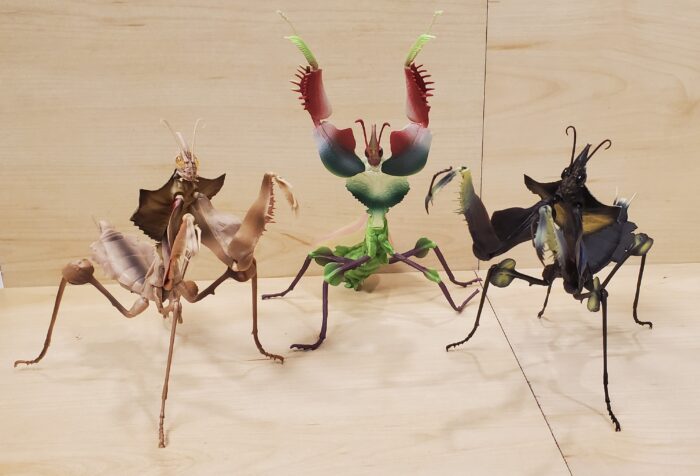
I have decided to start my ‘spooky’ October blogposts with a trio of ‘diabolical’ insects! I am talking specifically about Idolomantis diabolica, commonly known as the Devil’s flower mantis or giant Devil’s flower mantis, one of the world’s largest mantids. It is native to the rainforests of East Central Africa, including Ethiopia, Kenya, Malawi, Somalia, Tanzania, South Sudan, and Uganda.
Small Tortoiseshell (Little Wonders by CollectA)

Having recently showcased CollectA’s small tortoiseshell butterfly (Aglais urticae) in my daily ‘Museum’ posts on the ATF, I thought it would be a good opportunity to review it for the Blog! I was contemplating just migrating over my forum walk-around, but I am not happy with those images, so I took new ones for a fresh review.
Life Cycle of a Monarch Butterfly (Safariology by Safari Ltd.)

The monarch, Danaus plexippus, is probably the most commonly made species of butterfly. It’s been made by several major company, including CollectA, Safari Ltd (at least five times), Papo, and K&M International (at least twice), and is a common edition to insect and butterfly tubes, blister packs, and box sets ( couple examples on the Blog, here and here).
Fish Assortment 2 (Wonder World by Kenner)

Today I am reviewing a set of four animals I originally bought for just one of the figures. The set, which was being sold on eBay, was alerted to me on the ATF by forum member NSD Bashe. The set is called Fish Assortment 2 and it is one of four components of a larger collection that’s part of the Wonder World line by Kenner, a subsidiary of Hasbro at the time it was released (1995).
Bumble Bee (Garden Animals by Papo)

The genus Bombus, which includes the bumble bees, consists of over 250 species worldwide. They occur in most terrestrial habitats throughout the Americas and the Palearctic, but are absent in much of Africa, the southern Middle East, much of the Indian subcontinent, Australia, and New Zealand (although they have been introduced to the New Zealand and Tasmania).
Jellyfish Collection (Nature Techni Colour by Ikimon)
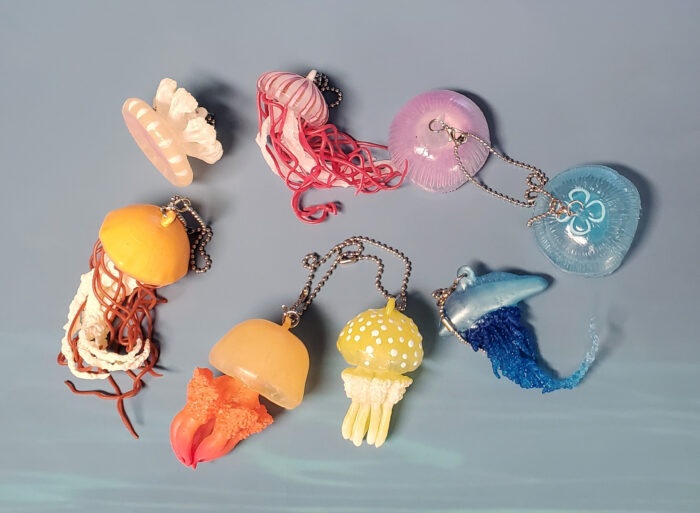
In 2010, Kitan Club released a set of 8 jellyfish (well, technically 6 scyphozoans and 2 hydrozoans) in their Nature Techni Colour line. These figures were advertised as ‘soft strap’, meaning they were soft and rubbery and had a strap attached to the top of the bell (disc) so they can be dangled from hooks or other support or worn on keychains, etc.
Great Grey Owl (Bullyland Birds by Bullyland)

As I write this review, the 2023 Safari Ltd. Wings of the World Great Grey Owl (Strix nebulosa) is currently en route to me. I thought it would be a good opportunity to review the 2010 rendition by Bullyland, which the Safari figure will replace, before it goes into the sales/trade/donation bin.
Frilled Shark (Diversity of Life on Earth: Mini Ancient Fish by Bandai)
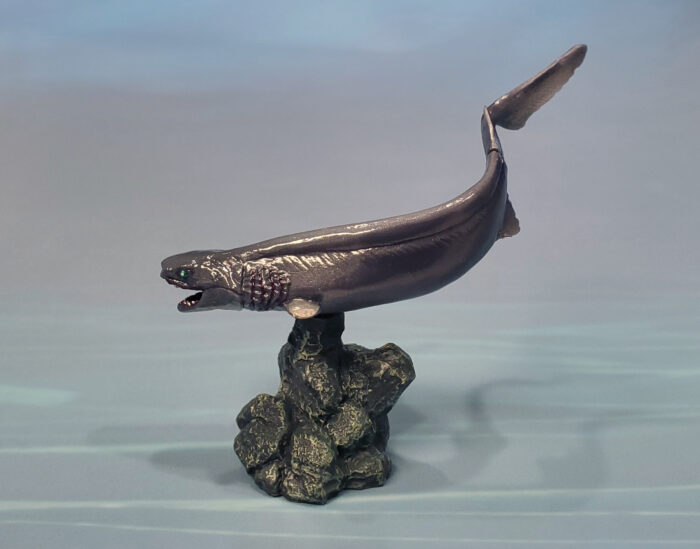
The frilled shark (Chlamydoselachus anguineus) is an enigmatic anguilliform shark in the family Chlamydoselachidae. There is one other extant member of this family, the South African frilled shark (C. africana). They are considered among the most primitive extant sharks. Frilled sharks occur nearly worldwide, usually in the waters of the outer continental shelf and upper continental slope.
Common House Spider (Garden Animals by Papo)

Before I start this review, I must again thank our friends at Happy Hen Toys who kindly donated this review sample for the Blog.
When today’s figure was first announced, it was referred to as a ‘common spider’. That left the door open for several ideas on what it might be (especially since the promo pic wasn’t taken at the most diagnostically-helpful angle).
Penguins of the World (Colorata)
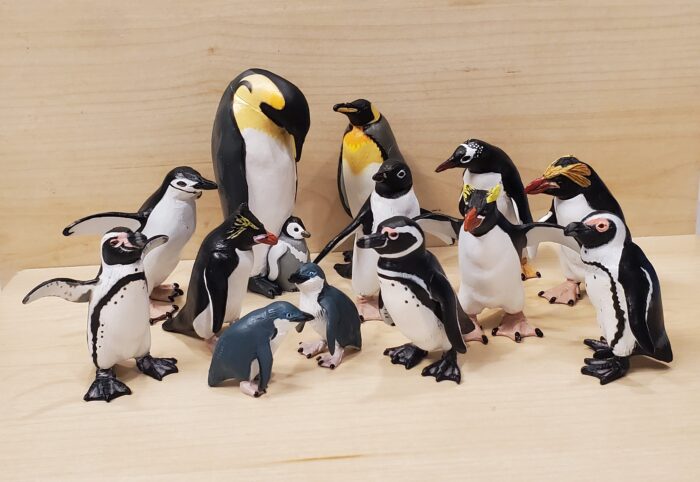
Recently, when forum member Suspsy reviewed the Papo emperor penguin, I made a comment that I also had this figure, and it was one of only a couple figures I didn’t initially retain from Colorata’s Penguins of the World box set. After I published that comment it got me thinking, and I revisited the three figures from that set I didn’t retain (the other two were the chinstrap penguin and rockhopper penguin, both of which I went with Safari Ltd.’s versions).
Japanese Carpenter Ants (Revogeo by Kaiyodo)

I am continuing what seems to have become a tradition of mine, which is to review the next Kaiyodo Revogeo arthropod. Today we are looking at a pair of Japanese carpenter ants (Camponotus japonicus) which were released just last month. I discussed the geographic distribution and biology of this species here the last time I reviewed the species, so for this review I will focus exclusively on the figures themselves.

